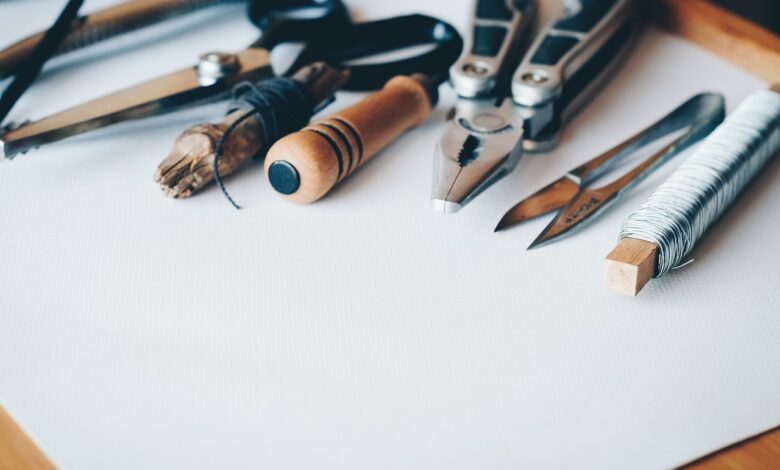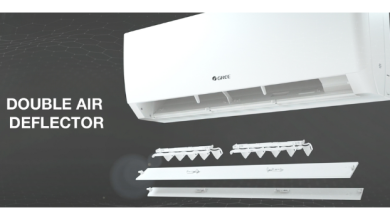How to properly use a step drill in 7 steps

The drill is one of the most common tools used for DIY innovations. The choice of the drill is of fundamental importance as well as , the perforation angle and the basic knowledge of current and water pipes. In the following 7 phases, OBI tells you how to avoid too deep or crooked holes and how to achieve perfect results.
Tip: by carefully cleaning the drill and its parts after each job you can extend the life of your appliance.
Step 1 – Mark the place to drill the hole
Before starting, it is important to check for electric cables, water pipes, iron elements or other metals in the wall we want to drill. To do this you can use a special detector of electric cables and metals. Usually the electric cables are located in the so-called installation areas, and run horizontally or vertically in the walls. Then check that the point to be drilled is outside the horizontal and vertical line that starts imaginatively from the power outlets and keep at least 15-45 cm from the floor, 15-45 cm from the ceiling and 10-30 cm from doors, windows and corners.
After checking the wall, mark with a pencil where to drill the hole. In the case of smooth surfaces, such as tiles, it is necessary to make a deeper mark with an awl, to prevent the drill bit from sliding. In addition, you can fix adhesive tape on the tile at the point to be drilled to give the drill bit more adherence. Here is the list of most popular drilling machines you might e interested in.
Step 2 – Choose the bit and mount it on the drill
By giving a few taps to the wall to be drilled, it is possible to discover its structure: dark noises indicate the presence of plasterboard or pore concrete, easy to drill, deaf noises are instead caused by walls in natural stone or concrete. In case you are unsure you can do a little experiment in a hidden corner of the wall.
Choose the drill to be used according to the wall to be drilled: a common non-percussion drill is perfect for plasterboard, porous concrete or wood walls; a percussion drill is instead suitable for walls in natural stone and brick and a drilling machine for very hard concrete. An accumulator drill can be used anywhere even if there are no power sockets, a power drill is instead convenient if you do not want to recharge the battery.
Depending on the material to be drilled, you can select drill bits for stone, wood or metal and, for each drill, the most appropriate dowel: use plasterboard anchors or tilting anchors for plasterboard and plasterboard walls and slabs, anchors for aerated concrete for hollow bricks, and finally expansion plugs for solid brick or concrete masonry
Select the right tip based on the diameter of the dowel. In the case of porous walls, it uses a small diameter to avoid too large holes. Insert the tip into the spindle and fix it using the appropriate spindle tightening mechanism.
Step 3 – Mark the depth of the holes
The depth of the holes must correspond to the sum of the length and diameter of the dowel. An easy way to avoid drilling too deeply is to mark the desired depth on the drill bit with a piece of colored tape. Some drills even have a depth limiter.
Step 4 – Choose a secure location
When working with the drill it is important to assume a stable position. The drill must be held frontally. Those who use the right hand place the left leg forward, the left-handed ones the right leg. If you are working on stairs, ask a second person for help.
Step 5 – Drill a hole in the wall
Place the drill perpendicular to the wall. To collect the dust that will be created during the operation with the drill, you can attach an envelope a few millimeters under the hole with double-sided tape or ask someone to vacuum it with a vacuum cleaner during the drilling process. Set the drill and start drilling evenly without adding too much pressure. To drill natural stone, brick or concrete walls, select the percussion mode and continue drilling until you have reached the desired depth. Turn off the drill and unplug it.
Step 6 – Clean the hole
In order for the plug and screw to be fixed in the wall it is necessary to remove the dust from the hole just made. To remove remains, we recommend using a vacuum cleaner or a broom.
Step 7 – Check and correct the hole
Check the accuracy of the hole you just drilled by inserting the dowel. If the hole is too small, continue drilling using a larger drill bit. If the hole is too large instead, fill it with putty and insert the dowel. Remove too much grout and wait two hours before inserting the screw.
Follow the OBI advice and make the perfect hole with a drill … in 7 simple steps.




